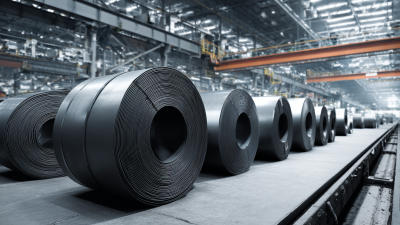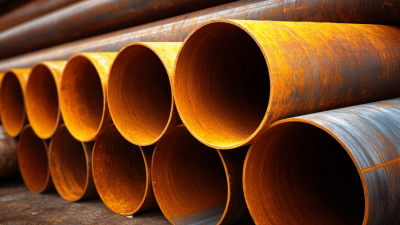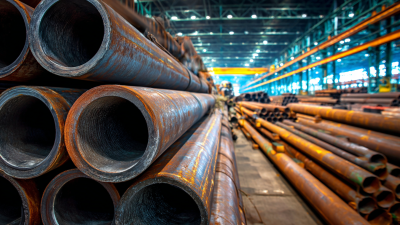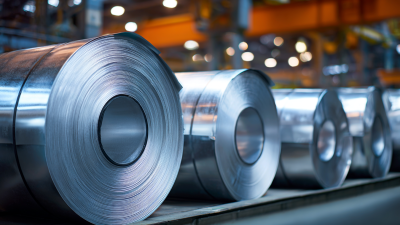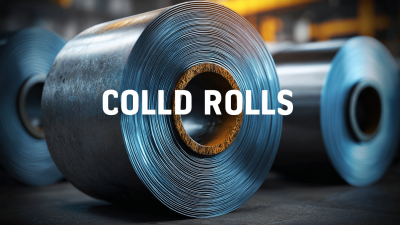When it comes to selecting materials for your construction or manufacturing projects, choosing the right Color Coated Coil is crucial. These versatile coils not only enhance the aesthetic appeal of your products but also provide essential protection against weathering and corrosion. With a vast array of colors, finishes, and materials available in the market, it can be overwhelming to determine which Color Coated Coil best meets your specific needs. This tutorial aims to guide you through the essential considerations for making an informed choice. From understanding the types of coatings to evaluating durability and maintenance requirements, our tips will help you navigate the complexities of selecting the perfect Color Coated Coil for your projects. Whether you are an experienced contractor or a DIY enthusiast, these insights will ensure you achieve the best results while maximizing your investment.

In modern construction, color coated coils have become an essential material, providing durability and aesthetic appeal to various projects. These coils not only enhance the visual charm of buildings but also offer protection against environmental factors. The paints and coatings industry has made significant strides, especially in regions like Bangladesh, highlighting the vital role coatings play in improving the longevity and quality of construction materials.
When selecting the best color coated coil for your needs, consider factors like material compatibility, environmental conditions, and the desired finish. For instance, ensure that the coil’s coating can withstand local climate challenges and maintain its color over time. Additionally, look for options that provide ease of installation and require minimal maintenance, aligning with your project’s long-term goals.
Furthermore, don’t overlook the importance of color psychology in your selection. Different colors can evoke various emotions and responses, influencing both the environment and those who inhabit it. Opt for colors that reflect the intended mood and purpose of the space, enhancing the overall experience of the building. By keeping these tips in mind, you can confidently choose the best color coated coil for your project, adding both functional and aesthetic value.
| Tip Number | Tip Description | Material Type | Coating Thickness (μm) | Color Options |
|---|---|---|---|---|
| 1 | Evaluate the purpose of the coil in your project. | Galvanized Steel | 20 | White, Blue, Red |
| 2 | Consider the environmental conditions of the installation site. | Aluminum | 25 | Grey, Green, Yellow |
| 3 | Select a color that aligns with your design aesthetic. | Stainless Steel | 15 | Black, Silver, Bronze |
| 4 | Check the durability and warranty of the coating. | Zinc-Aluminum Alloy | 30 | Champagne, Charcoal |
| 5 | Ensure the coil's compatibility with your hardware requirements. | Polyester Coated | 18 | Navy Blue, Forest Green |
| 6 | Consider the maintenance requirements for the chosen color. | PVDF Coated | 40 | Bright Red, Ice White |
| 7 | Consult with suppliers for expert guidance on color options. | Rheinzink Coated | 22 | Titanium Grey, Deep Blue |
The popularity of color coatings in various industries has witnessed a significant rise in recent years, reflecting broader market trends that emphasize aesthetic appeal and functionality. According to recent market analysis, the global medical coatings market is projected to grow from $5.06 billion in 2024 to $10.85 billion by 2032, featuring a compound annual growth rate (CAGR) of 9.8%. This growth can be attributed to increasing demand for high-performance coatings that not only enhance visual appeal but also provide essential protective functions in medical applications.
Similarly, the coated cookware market is also flourishing, with the enamel cookware segment expected to see an increase in value from $1.59 billion in 2025 to $2.62 billion by 2032, exhibiting a CAGR of 7.36%. The diversification in materials, such as ceramic and anodized aluminum coatings, reflects consumers' rising interest in sustainable and non-toxic cooking options. Furthermore, advancements in spray coatings are projected to propel the global market from $93.61 million in 2024 to $151.46 million in 2032, marking a CAGR of 6.2%. These trends indicate that both aesthetic choices and functional developments are shaping the future landscape of coated products across various industries.
When selecting color coated coils for your projects, evaluating durability and weather resistance is paramount. According to a report by the National Coil Coating Association, industry standards dictate that these coils should endure extreme conditions, including high humidity, UV exposure, and temperature fluctuations. The coatings used in these products typically comprise polyester or PVDF (polyvinylidene fluoride), which are known for their enhanced resistance to fading and chalking. Data shows that coils coated with PVDF can maintain their gloss levels significantly better than those treated with standard polyester, with some models reporting a gloss retention rate above 80% after 10 years of exposure.
Furthermore, corrosion resistance plays a crucial role in determining the longevity of color coated coils. The American Society for Testing and Materials (ASTM) has established rigorous benchmarks for evaluating the performance of these coatings in various environments. For instance, the ASTM B117 Salt Spray Test assesses how well coatings withstand corrosive conditions, with results indicating that a properly coated coil can resist corrosion for up to 1,500 hours, ensuring that your project maintains its aesthetic appeal and structural integrity over time. Therefore, when selecting color coated coils, it’s essential to consider these industry standards to guarantee the durability of your investment.
When embarking on a project, one of the most significant decisions lies in selecting the right color-coated coil. While aesthetics play a crucial role, understanding the cost-effectiveness of these materials is paramount. It's essential to weigh the initial costs against long-term benefits, as investing in high-quality color-coated coils often leads to savings on maintenance and replacements.
One tip for making informed financial decisions is to compare the price per square foot of various coils. This includes not just the base price but also additional factors like durability and resistance to environmental effects. Cheaper options may seem appealing at first glance, but they could incur higher costs over time due to maintenance requirements. Another important consideration is the warranty. Products with longer warranties typically indicate greater durability, which translates to fewer expenses down the line.
Additionally, evaluate your specific project needs. Different projects may require varying specifications, such as thickness and finish types. Understanding these needs helps in selecting coils that not only fit your budget but also fulfill the project's requirements effectively. Overall, a comprehensive approach to evaluating financial implications will guide you to the best choice for your project.
When selecting color coated coils for construction projects, sustainability should be a primary consideration. Eco-friendly options not only reduce the environmental impact but also enhance the overall value of your construction. Look for materials that are produced using green manufacturing processes and sourced from sustainable resources. These considerations can significantly lower carbon footprints, making a positive contribution to a more sustainable future.
Additionally, explore the availability of recyclable and durable color coated coils. Choosing options that can be easily recycled at the end of their lifecycle ensures that waste is minimized and materials are reused, aligning with the principles of circular economy. Products that offer long-lasting performance can reduce the need for frequent replacements, thereby conserving both resources and energy. By prioritizing eco-friendly options, you can make responsible choices that benefit both your projects and the environment.
